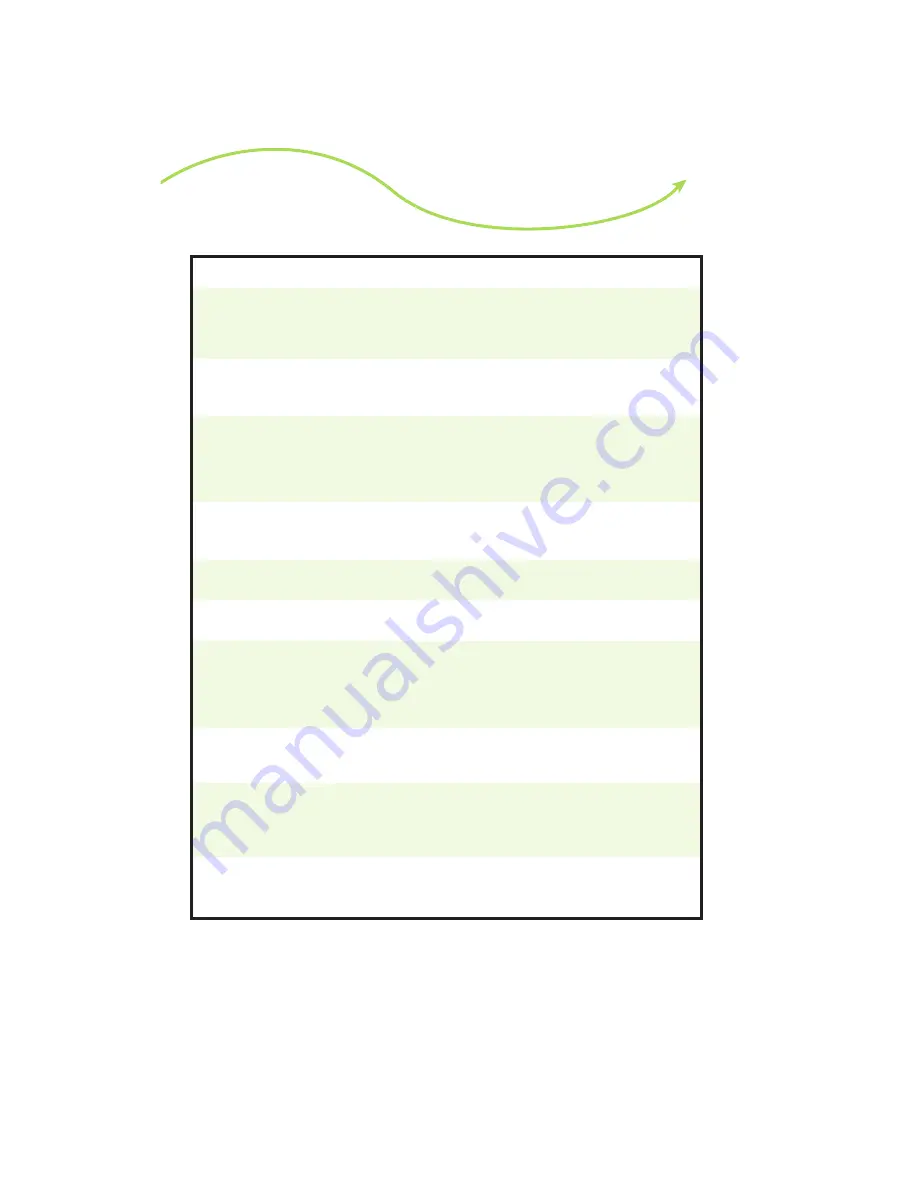
16
•
Troubleshooting
Troubleshooting
QUESTION
The flatbread dough
squeezes out the front
of the Press.
The flatbread is not flat.
The pizza dough won’t
press flat.
When pressed the
flatbread sometimes
get holes in it.
The flatbread seems
doughy or uncooked.
The flatbread is too
crisp or overcooked.
The flatbread “breaks”
when I try to roll or fold it.
When pressing, the
dough makes a funny
sound.
The Bread Paddle
looks warped.
Sauces or liquids are
difficult to remove from
the Griddle.
ANSWER
Position towards the back of the Bread Paddle in
the Press. Press lightly, open and push back bread.
Finish pressing. Also check to make sure you’re not
using too much dough.
Check that the position of the dough is towards the
back of the Press. Then press firmly and quickly. Also
make sure you’re not using too large a dough ball.
The thicker breads, like pizza, should first be
flattened in the Press. Then move the dough to the
Griddle and cover with a piece of aluminum foil.
Using an oven mitt on your hand press down on the
foil covered dough to help flatten.
Try using less pressure or several quick presses.
The holes are caused when moisture in the dough
turns to steam too quickly and “breaks” the dough.
Try using smaller amounts of dough or increase the
cooking time in the Press and/or Griddle.
Use less pressure when pressing and remove from
the Press or Griddle sooner.
If too thick, make thinner more flexible bread by
less dough or more pressure when pressing. If too
crisp, try shorter cooking times. If the flatbreads
were made in advance and have cooled they must
be reheated to be folded or rolled.
This results from the air being rapidly pressed out
of the dough. This is normal.
The paddle may have a slight bend to it due to the
thinness of the metal. It was designed this way for
a quick transfer of heat. This does not affect the
performance of the unit.
Use a spoon with a thin edge to remove the most
liquid from the Griddle. A regular flatware spoon is
better than most kitchen spoons.
















